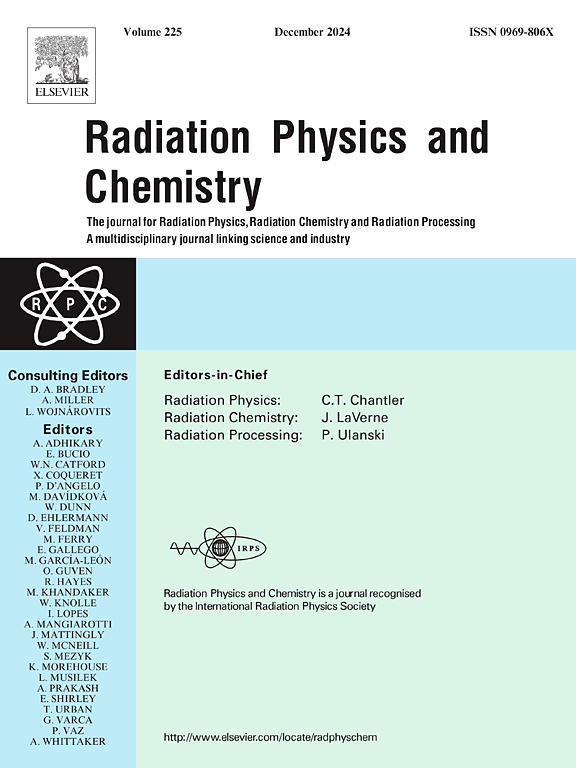Radiation and effective dose for contrast-enhanced computed tomography angiography procedures
IF 2.8
3区 物理与天体物理
Q3 CHEMISTRY, PHYSICAL
引用次数: 0
Abstract
Contrast-enhanced computed tomography angiography (CECTA) is a crucial diagnostic tool for evaluating lower-limb vascular pathologies with high sensitivity and specificity. Previous studies have shown that patients receive higher radiation doses per procedure, which may increase their risk of cancer. Therefore, weighing the benefits against the potential risks and optimizing the patient dose are essential. This study used three imaging protocols to optimize the radiation dose for patients during lower-limb CECTA procedures. The data collected in this study comprised 151 patients: 61 (40.4%) females and 90 (59.6%) males who underwent CECTA procedures. The patient population was classified into three groups according to the image acquisition protocol: routine (standard), combined low-dose (a combination low-dose technique with standard and high-quality dose), and low-dose techniques. A Toshiba computed tomography (CT) scanner (160 MDCT) was used for all patients. The CT-Expo software was used to calculate the effective dose per CECTA procedure. The average air kerma length product (P对比增强计算机断层血管造影程序的辐射和有效剂量
对比增强计算机断层血管造影(CECTA)是评估下肢血管病变的重要诊断工具,具有高灵敏度和特异性。先前的研究表明,患者每次手术接受的辐射剂量更高,这可能会增加他们患癌症的风险。因此,权衡利弊和潜在风险并优化患者剂量至关重要。本研究使用三种成像方案来优化患者在下肢CECTA手术期间的辐射剂量。本研究收集的数据包括151例患者,其中女性61例(40.4%),男性90例(59.6%),均行CECTA手术。根据图像采集方案将患者人群分为常规(标准)、联合低剂量(低剂量技术与标准剂量和高质量剂量相结合)和低剂量技术三组。所有患者均使用东芝计算机断层扫描(160 MDCT)。使用CT-Expo软件计算每次CECTA手术的有效剂量。每次CECTA手术的平均空气孔径长度积(PKL (mGy.cm))和平均体积CT空气孔径指数(Cvol (mGy))分别为3,250、1,280和429,常规、联合低剂量和低剂量技术分别为15,3.24和2.37。对于接受相同手术的患者,每次手术的剂量减少(PKL (mggy .cm))分别为常规、联合低剂量和低剂量技术的47.7%、79.3%和48.3%。在我们的研究中取得的显著剂量减少为患者安全的潜在改善提供了乐观。然而,局势的紧迫性不应被忽视。需要立即采取行动,通过正确使用现代CT技术的剂量节约能力来减少对患者的剂量。
本文章由计算机程序翻译,如有差异,请以英文原文为准。
求助全文
约1分钟内获得全文
求助全文
来源期刊

Radiation Physics and Chemistry
化学-核科学技术
CiteScore
5.60
自引率
17.20%
发文量
574
审稿时长
12 weeks
期刊介绍:
Radiation Physics and Chemistry is a multidisciplinary journal that provides a medium for publication of substantial and original papers, reviews, and short communications which focus on research and developments involving ionizing radiation in radiation physics, radiation chemistry and radiation processing.
The journal aims to publish papers with significance to an international audience, containing substantial novelty and scientific impact. The Editors reserve the rights to reject, with or without external review, papers that do not meet these criteria. This could include papers that are very similar to previous publications, only with changed target substrates, employed materials, analyzed sites and experimental methods, report results without presenting new insights and/or hypothesis testing, or do not focus on the radiation effects.
 求助内容:
求助内容: 应助结果提醒方式:
应助结果提醒方式:


